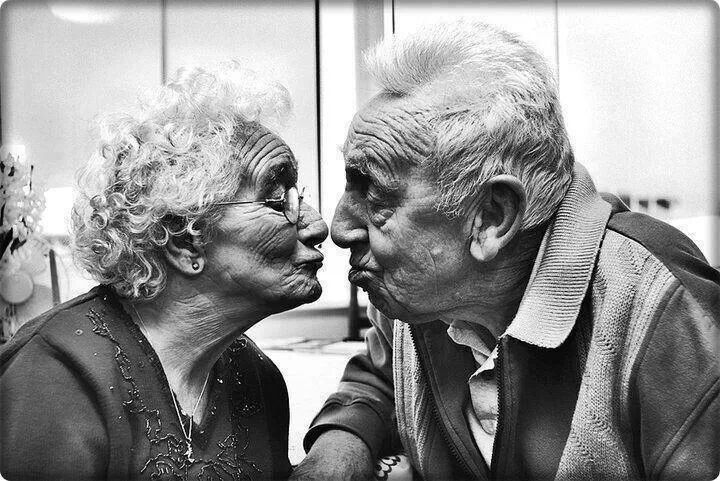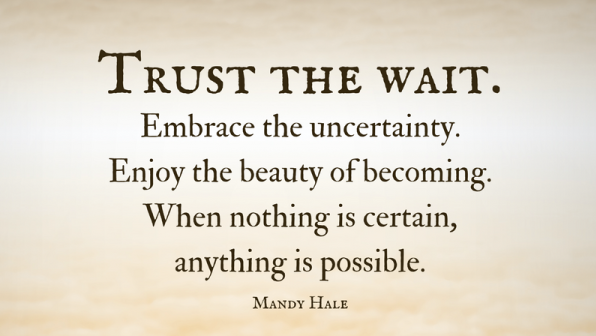|
Do you want Deep Success? What I mean by ‘Deep Success’ is connecting with what success means at the level of your heart and soul. It’s about truly, deeply listening to the authentic voice within that defines your core values and inner most meaningful vision for your life, so that you can realise this.Deep success will mean something different for everyone; it is not limited to the ideals of our society and general upbringing: to do well in education, with financial security and abundance, to attain prestige, fame or power over people. Deep success is aligned with the beauty of heart, which means the success you attain gives you feelings of peace, strength, freedom, happiness, fulfilment, meaningful purpose, true power, positivity, joy and vitality. When I ask you if you want deep success, I am inviting you to re-connect with your authentic self; your core heart-centred truth about who you are, how you want to be, what you want to create, do and have, and the influence and the energy your heart wants to offer in your world, and to give your focus and energy to honouring this; when you choose to pursue deep success, you choose to honour your heart. Honouring your heart takes strength. A person who lives in alignment with their heart is fundamentally strong because they say: ‘I love and believe in myself and my truth’. At first, they may say this with just a glimmer of a flicker of flame of faith before the realisation of the goal or dream or way of being is realised. However, the outcome is a mere reflection of the real power within that is born in the very moment that you make the choice to honour your heart and put your love into action. You have this power already. ‘The Empowered Woman’s Circle’ is a place for you to explore, define, choose and create your deeper success. What I bring to this space for you is my authenticity, experience and qualification. It was in my late teens that I said to myself, ‘First, I will find happiness, and then I will create financial success’. The reason I said this to myself was because, having been brought up in a very privileged lifestyle, surrounded by miserable millionaires, and while battling my own depression, it became so much more important to me to be happy than to be rich. I did not dismiss the importance of money; I value financial security, I love beautiful living spaces and gardens, fine silk, Michelin star dining, and time to create what brings me joy, and to give to others and my community in a way that fosters heart-felt connection; the gifts financial abundance can offer. But I didn’t want to be caught in the illusion that money would give me happiness; I wanted to be happy first, because then I knew I would be free. The darkest times in a state of depression became some of the most gifted moments in my life, forcing me to connect with what mattered most; to seek deep and important meaningful purpose and the path to peace and happiness. I do not believe everyone needs to be lost in the dark to find their light; thirty years ago, there was no one to hold the space to guide me to connect with my heart-centred values, to teach me how to stand strong in the face of fear and adversity, or how to manage overwhelming emotions while I stumbled through my life. Finding my light developed as I learnt what it means to truly love; to live in alignment with love-based values: acceptance, authenticity, care, compassion, empathy, freedom, faith, kindness, joy, peace, respect and trust. Living from love did not happen overnight, it was slow to emerge, and shall continue to grow, for love and her pure expression have no limitations. So far, some of the most significant realisations of being true to heart have been: In my late twenties, I followed my dream to live in the sunshine, leaving England to move to the south of Spain and start a new life, by myself. I believed the sunny climate and outdoor living would lift my mood and this was essential; my well-being was the priority because until I had this, I would not be able to authentically live my truth or take my next step, everything else came second. To honour my heart meant choosing to be brave in honouring my truth in the face of so many fears that presented at that time. The outcome was finding a happier life in the sunshine and so many positives that grew from this In my thirties, in order honour my meaningful purpose; to truly empower adults and teenagers to live their truth and create deep success, while continuing to work, I returned to university for six years to gain a masters degree in psychology and mental health, while also completing further training in transformational coaching, because I found the practice more empowering than traditional therapies. To honour my heart meant giving so much of my time to learning and growth, while bravely trusting that it was not too late to create my dreams, at my age, and that combining mental health knowledge and coaching practice would work as an effective and empowering practice for healing, growth and transformation, and challenging many other fears that presented at that time. The outcome has been the honour of working with many people from multicultural backgrounds to support healing, growth and transformation, and finding a depth of meaning in my work that revealed itself beautifully in later years; indeed the depth of meaning continues to reveal her wonder. Living my true-heart truth meant walking away from a man I was deeply in love with, but not happy with, to pursue true love and happiness. To honour my heart meant finding a huge amount of bravery to overcome the fears that presented at that time. The outcome was the gift of discovering true love. In my forties, to honour my very deep truth, and in fact the only truth my heart truly wanted; to become a mother and share my love with my child. I decided to do this alone. After I lost my first baby, stillborn at 37 weeks, being true to heart helped me find the strength to go on and have two more babies, and with this my feelings of true love and happiness grew. I can honestly say choosing to honour my heart and soul gives me strength, which builds my confidence to keep creating with love, knowing the rewards this offers, even amidst painful tragedy. To be deeply successful, is not to be free of suffering, tragedy, pain or fear, it is to embrace them in love, which gives us strength, while confidently creating and living with greater peace, freedom, happiness, joy and deep fulfilment. The Empowered Woman’s circle invites you to grow you power and supports you in your brave determination. It is not for me to guide your process, rather, because of my journey and professional skill, to hold a space for you to awaken your deeper truth and to encourage the realisation of your heart's truth in your own unique way. Join the Empowered Woman’s circle in person (Sotogrande) or online, and be supported in growing your power to create and be as your heart truly desires. Our next group begins in May with twelve people per group. https://www.antoniabehan.com/womans-empowerment-circle.html
0 Comments
Or, are you in conflict debt? To be in conflict debt is a high cost to any organisation because it means important decisions and actions are not taken, there is division throughout the company, and a toxic work environment is experienced by all. Conflict is often perceived as a negative, with ideas of people shouting at each other, but this is just one example of conflict, and with unregulated people. Conflict, essentially, is about meeting each other with our differences, and summarised well in the Merriam Webster dictionary: ‘The struggle resulting from incompatible or opposing needs, drives, wishes or external or internal demands’ Meriam Webster Common conflicts are when the organisation is faced with more than one priority, when a gap within the organisation or risk to the organisation is recognised but not discussed, and with giving feedback that people do not want to hear. Many people feel afraid to raise these concerns because they prefer to avoid the challenge of conflict, because it feels uncomfortable or due to personal and common fears, such as rejection, dismissal, strong emotion or not being liked. However, the consequence of avoiding conflict is to amount conflict debt, and this is far worse. When people avoid conflict, it is redirected to become an internal battle that breeds only suffering for people, while embedding conflict debt into daily life. What does conflict debt look like?
How do you resolve conflict debt and get better at conflict? The answer, is to learn how to speak your truth while owning your power. I shall be writing about this in my next post. To receive my posts in your inbox, please subscribe to my newsletter here: www.antoniabehan.com This article offers insight on how to co-create true love in your romantic relationship Created by Harville Hendrix in the late 1970s and popularized in his bestselling 1988 book Getting the Love You Want: A Guide for Couples (Hendrix & Hunt, 1988), Imago theory suggests that couples unconsciously attract partners who reflect unmet needs from childhood, and that this allows for the healing of childhoods hurts; the feeling of not being loved the way we needed to be, or not having the safety and security we needed at the time, or losing the innate sense of joy and aliveness that we were born with, and through healing, re-discovering our true selves and a feeling of joyful aliveness that may have been lost. When a relationship forms and romantic love develops, the feeling of ‘being in love’ can become all consuming. This is because the brain releases the stimulant phenylethylamine which leads to feelings of euphoria and elation (Marazziti & Canale, 2004; Savulescu & Sandberg, 2008). Also known as the infatuation phase, the chemical ‘high’ experienced during this relationship phase can lead a person to idealise the other, so that only the positive aspects of the person are seen, and there is a failure to see their flaws, also known as the ‘Halo effect’. With this ‘perfect’ person, you feel safe, secure and so in love, and with this, a feeling of joy and aliveness is experienced. As a result, you believe you have found what you were looking for, or what was missing in your life, and now everything in your life is okay, until it isn’t. When the infatuation phase is met with reality and the real person, flaws and all, come into view, the relationship meets its first struggles, or it breaks. For couples that remain together, either the challenges are worked through, allowing the couple to move towards true love, or the couple remain together in a state of discontented acceptance. To live in ‘true love’ there first needs to be self-love, which means knowing yourself and your values, and allowing your true wants, hobbies, hopes, dreams, friendships, and your music and movie choices to co-exist with those of your partners. This can trigger certain fears:
Essentially, the fear of loosing the feeling is safety, security, love and joyful aliveness that was so needed and wanted comes through individual lenses of fear, causing a person to repress themselves, avoid what brings them happiness, limit themselves, or to avoid open and difficult conversations. This scenario does not paint the picture of a couple living in love, but a couple living in fear. To live in true love, fear needs to be worked through, and the pains and hurts of childhood healed. Healing childhood wounds In childhood, when our caretakers are attuned to our wants and needs, ready and able to provide warmth safety and sustenance, our feelings of aliveness and well-being are sustained and we remain whole. However, when, albeit it with the best of intentions and all the strength of heart, parents are just not able to maintain the level of care and support a child needs all of the time, that child may learn that their needs and feelings of love, safety or security cannot be met. As a response, children adopt primitive coping mechanisms ranging from constant crying to get attention, to withdrawing inward and denying personal needs. At the same time, the wider world teaches children how they ‘should’ be, in order to be loved and accepted, moulding children into a way of being that often results in the suppression of those parts of the self that are perceived to be unacceptable or unlovable. This is the beginning of suppression of self, and so of love, rather than allowing the true and authentic self to live and to thrive. This results in feelings of insecurity, anxiety, depression, unhappiness, lack of core connection with self, emotional suppression, and in many cases the development of more unhealthy coping mechanisms that become necessary in order to maintain suppression or the avoidance of pain, fear, and anxiety. When we fall in love, we believe that we’ve found or re-discovered that missing sense of joyful aliveness, and that we have found true selves because in the felt sense of safety and security in this ‘love’ we allow are true and full self to be present. When the ‘halo’ effect wears off and reality sets in, we begin to learn more about each other, we discover things we do not like or want, and then it dawns on us that our partners cannot give us the love and care we hoped for. It as at this point that, according to Imago theory, we begin to experience the same relationship patterns with our partner as we had with our caregivers, and with this, old wounds are touched and re-opened. Fearful of loosing the sense of joy and aliveness, and the love and security we felt while ‘in love, this can see some people regressing to childhood patterns of behaviour; crying, shouting, criticising or withdrawing, behaviour patterns that sometimes result in the manifesting the fear of loss. This is the moment that brings opportunity for healing and growth towards true love. When we can understand that, at some level, we have chosen our partners to heal certain painful experiences, and that the healing of those experiences is the key to the end of longing, the first step on the path to living in true love is taken. The next step is to bring the subconscious behaviour patterns, fear triggers and childhood hurts into view, and to initiate the healing process, which means moving through emotional blocks, embracing feelings and emotions, learning healthy coping skills, and cultivating self-acceptance, faith in self, respect and value of self, and self-confidence, so that the love, safety and security grows from within. Once attained, a person begins to feel whole and alive again, and a return to happiness is experienced. How to be together in true love True love blossoms when the couple work together from this individual place of security and love, to love and care for each other. Consciously giving the other person what they need is a choice of love, and when we consciously give our partners what they need, and what is hard for us to give, such as empathy or acceptance, we are forced to see and allow our whole self; we embrace and own and enliven ourselves, and so we begin to heal, together. For some, this process can feel like loosing the self. What is actually happening, is that defences are coming down, hearts are softening, and a person is simply allowing more of themselves to be; they are not losing themselves, they are re-discovering themselves; they are being re-born. From this opening of hearts, true love blossoms and the couple and continue to live and grow in love, together. It is only by daring bravely to be our authentic selves with each other, giving each other what each person needs, that it becomes possible to fully love, because it is only in authenticity that we are able to allow a true and full connection with ourselves and another person. When the heart is open and true, we move into a place of peaceful connection. Now the couple can grow together as in-dependent, rather than co-dependent people, living in love, not out of any need for each other but with a strong and authentic want to be together, because this brings you both true happiness I'd like to raise a conversation for the purpose of raising awareness and exploring an inclusive and professional solution. The conversation is based on two questions: 'How is the theme of DEI approached when breast-feeding woman choose to return to work, and breast-feed at work?' and 'What is professional practice?' Two questions are posed, because both are relevant and important.
My name is Antonia Behan, I am a professional coaching psychologist BSc MSc MBPsS MICF PCC and I am a breast-feeding mother returning to work. My little one is refusing the bottle and so I am returning to work, with him. This is because I do not want to traumatise my baby through any type of force (syringing the milk into him), or causing prolonged distress by leaving him with someone to try and bottle feed him while I, in his mind, 'disappear', and I want to return to work, so I have decided to return to work and keep breast-feeding at work. What do you think about this? Let me give you some context... I provide online and in-person coaching and therapy in a range of formats to a diverse client base, including adults, adolescents, senior corporate and political leaders, management teams, families, schools and private companies. For some clients, I may work with trauma related themes, anxiety or general psychological well-being, and for others it may be integrating a new corporate culture, leadership growth, or fostering heart-centred values. Some of my clients will be struggling psychologically, others are in a healthy state of mind and focused on thriving. So far comments have ranged from:
To;
What is the right answer? For me, DEI is about everybody, and so in this example, it is about being inclusive of breast-feeding woman, and it is about everybody this breast-feeding woman is working with, because that is what being truly inclusive means; it means considering everybody. While we cannot please everybody all of the time, and we cannot make everyone feel comfortable, we can offer everyone an equal opportunity, we can open up a conversation to allow people to be heard and have their feelings valued, and we can promote free choice: It is my free choice to return to work and breast-feed, and how other people choose to respond to this, is their free choice. Asking people, 'what is your choice' is being inclusive. Asking people, 'what is your choice' is being inclusive. Let's move to the next question: 'What is professional?' When I work in a therapy capacity, I am often working with people who may have trauma or attachment related themes, some may be highly anxious, depressed, or struggling with self-esteem. In these situations, from a professional practice perspective, I know that I need to be fully present, and 'with them' and that the connection with my client could be damaged by the presence of another person (baby) taking some of my attention. Therefore, I have made the choice to postpone my therapy work because as a therapist I am responsible for creating a psychologically safe space and taking care of my clients, who may not be in a psychologically well-enough space to make a healthy choice for themselves; they may say it is okay to feed my baby, because they are not yet strong enough to say 'no'. When I work in a coaching capacity, it is online and people are coming to me from a psychologically well space (although they may not always be psychologically well), and I still need to be present and listen well to my clients, which I can do while breastfeeding; indeed breastfeeding makes me more present, calmer and more heart-centred, and so I believe I am actually a better coach in this space. Coaching comes with a strong focus on personal empowerment, and is about holding a space for a client to grow in the direction they choose. It is not my place to make decisions for my client. With this in mind, I am simply asking each of my clients (on the basis of psychological wellness) what is their preference: postpone our sessions until my baby is on the bottle, or, when my baby needs feeding during our session, my childminder brings him into my home office and we turn off the video, for the time it takes to feed him, while continuing with a voice only session. Let people choose, because they are psychologically well-enough to make a healthy choice, and free choice is inclusive. What about breast-feeding at live seminars and workshops with any number from 8 to 500 people in a room? I cannot possibly accommodate the different needs of a large seminar group: some will be accepting and comfortable, others may be critical, or there will be some who feel uncomfortable, which is understandable What I can do, is present what may happen, prior to any enrolment, and let people choose. Personally, I feel unable to 'perform' a seminar, because it requires a focused head space and an active pace that breast-feeding takes me away from, and so I am choosing to postpose live seminars, as a matter of professional delivery quality. What about small group workshops? I can ask everybody and I may get different and conflicting feedback, however, people can choose to attend, or not, knowing I may breast-feed. Am I going against DEI principles by breastfeeding? DEI is not just about everybody else, it is also about me; it is about everybody. Today, I can offer a service that some will be accepting of, and others will not, in a few days or weeks, it will change. I am a woman, perhaps some prefer a male coach. I am from a certain cultural background that is different to some people; some may prefer a coach who understands their culture better. There are different preferences everywhere. Our uniqueness is part of our beautiful world; let's celebrate them and know that sometimes we cannot accommodate everybody and it is not about exclusion or inclusion, it is about recognising and empowering free choice in a loving and accepting space. What may happen to the way a workshop runs, if my baby is brought to me for 20 minutes a couple of times during the full-day workshop? I am fairly certain that the pace with slow down, I will move into a calmer and more heart-centred and connected space, and instead of thinking about what I am delivering, or facilitating, a space will be created to foster greater connection and allow for information and emotional processing, which will be supportive of those participants who require process time, and it will encourage this important recognition to pause, process and reflect, as a powerful facilitator of learning and well-being; I believe my workshops will be even better thanks to the gift of breast-feeding, and I shall design them well, with this in mind. This article highlights the reality that DEI themes are often unique, complex and that they always include everybody, and so I believe plenty of time is needed to allow for mindful consideration about how we live and work together DEI policy cannot require creating something that everyone can be a part of, because we cannot accommodate every individual need and difference all of the time. What we can do, is be mindful about how our choices may impact others, and when we recognise DEI related themes, invite people into a conversation, learn about how people feel, and be accepting and empathic in our responses, because that is what we can do, and when we do, we are operating in a heart-centred space to facilitate the growth of more love in our world. I can accept you, I can accept your feelings and view points, I can accept your differences, I can accept your uniqueness, I can accept things about you that I may not like. I choose not to limit my capacity to work to manage other people's discomfort. Can you accept my choice? You are free to choose to participate in coaching with me, and join my workshops, and for the next few weeks and there may be breast-feeding. I fully accept your choices. Meanwhile, this may be a non-issue, because as I am sitting here writing this article, my wonderful babysitter is patiently managing to get my 15 week old to drink a little from the bottle!! Acceptance is a funny thing, and sometimes a magical thing, when we embrace our situation, whatever it is and however we are, the struggle ends and we move into a peaceful place with ourselves and each other. Article by Antonia Behan Copyright 2023 www.antoniabehan.com 'I am not loving him enough' has become an echo that interrupts the joy of motherhood. When I had one baby, I felt that I was able to create a good balance in my life and give my son the love, care and the nurturing that he needed and that I wanted to be able to provide. Since becoming a mother of two babies, I find myself torn, and I feel that I am not able to give either of them enough of my love. I genuinely want to give more, and to have the amount of one-on-one time I had with my first born.
On reflection, my conflict is not with guilt, because there is nothing wrong in wanting to love more; I have done nothing wrong and so my guilt is a false echo. My conflict is with my reality; I have chosen to be a single mother and have two children, I choose to do the work I do the way I do it, trying to balance time with my family and giving the energy needed for my work to maintain it's enjoyment, profitability and potential to flourish. In my reality today, it is not physically possible to give both of my children the time I was able to give to one, but my love...my love is unconditional, the love I feel for each of them is unconditional and abundant. Indeed, I feel, on becoming a mother of two children, my love has only amplified to accommodate; there is no lack of love. The truth is, I love them both more than enough. The truth is, I am rather sleep deprived, and feel there is just not enough time or enough of me to do and be what I want right now; my reality is not as I want. The way to resolve this conflict is to define what I want (I have done this for myself). The next step is to give energy and priority to what is within my power to influence, and to do so with bravery and confidence, and without limitation of attachment on how this comes about; to open myself to infinite possibility, in the pursuit of what really matters now, and then let go let go let go of everything else, and as much as possible. When I choose to believe in myself and trust life, while taming the voices of fear, I can do this. Copyright Antonia Behan march 2023 “Leadership is about empathy. It is about having the ability to relate to and connect with people for the purpose of inspiring and empowering their lives.”— Oprah Winfrey
Empathy is the ability to recognise, understand, and share the thoughts and feelings of another person, which enables us to connect with and support each other. To be an empathic person requires self-empathy, this means having the ability and making the time to connect with yourself, your needs and wants, dreams and desires, values and beliefs, and your feelings and emotions, and consciously honouring them. Why is self-empathy important? To be able to gain a felt sense of what someone else may be feeling, we need to be in touch with our feeling and emotional world. If we are blocked or supressed, perhaps as a result of trauma, medication, or a psychological reason, we cannot truly sense another. This does not mean a person who is not able to self-connect cannot empathise; cognitive empathy allows people to intellectually assess how another person may be feeling, and appropriately and sensitively respond to this. However, emotional empathy opens up a whole new world of potential connection with another human being, and people can feel it when it is real. When you are empathic to self, able to connect with your feeling and emotional world, you are able to ask yourself ‘what thoughts’ or ‘what beliefs’ are behind these feelings or emotions, facilitating mindfulness development, and the ability to master your thought processes, which enables you to guide your feeling and emotional world in the direction that supports your well-being. When you can do this, you are also better at self-regulating your emotions, which is essential to holding a safe space for difficult or sensitive conversations with another person. When a person cannot self-regulate, their own internal conflicts may be triggered and lead to emotional outbursts or inappropriate or unprofessional behaviours, that can damage a working relationship. Self-empathy means that because you care to connect with you, you are more likely to hold compassion towards yourself, and being in this loving space makes you a stronger leader. Why? Because when you love you, and act on this love, you hold greater self-esteem and so you set healthy boundaries, manage your time and energy in a way that supports your well-being and performance, make healthy choices for your mind, body and soul, and create a way of living, being and working that aligns with your heart-centred values and your authentic self; you function better and inspire others. When you do this for you, you understand the value of this way of being; empathic, and it becomes very natural to extend this to others. When you operate in love for you, you operate in love for others, because, by the very nature of being, you are heart-centred, and so your inspired leadership grows. For many years, I battled with severe trauma-related anxiety, which meant that I was disconnected from myself, indeed I was afraid to connect with my emotional world; afraid of overwhelm. I managed to connect with people on a cognitive level and I was not without emotional empathy; during focused moments with other people when I needed to truly listen and connect, I could sense their feeling and emotional world and it touched my inner world, because I was opening my heart. However, because I was afraid to feel, this would also trigger anxiety, which I would have to supress in that moment, so that I could be there for another, because I wanted to. The result of this way of being was worrying about the day I would not be able to supress my anxiety enough, and become emotional overwhelmed in front of a client, and then when feelings and emotions were touched, they did not stay present for long, I did not stay present for long, because I was afraid. I was living and working in fear, and this was not kind or healthy for me. When I finally made the brave choice to embrace my inner world, it was overwhelming, but because I choose it, because I wanted it, the overwhelm was manageable. My strength developed with the knowing that I was choosing bravery, I was choosing vulnerability, I was choosing to accept what was within me, and so I was proud of me because I had finally truly and authentically and at the most devastating time in my life, finally chosen to love, and to walk so authentically along the path I felt so passionate about. Now, I can be more present in love, which means all feelings and emotions are open, and I experience this as something truly beautiful and powerful; I am strong because I can be with all that I am and because I can be with all that I am, I can hold this space for you, sincerely, with acceptance and loving kindness. If you or your organisation would like to enhance your empathy, and integrate more heart-centred values and behaviours, feel welcome to connect with me at: antonia@antoniabehan.com I am based in Sotogrande, Cadiz and run live workshops between Gibraltar and Malaga, or Globally via Zoom Conferencing. You may be interested in ‘Lead with Love’ a group-based leadership programme for senior leaders and managers: https://www.antoniabehan.com/lead-with-love.html The system is changing, the way we work is changing, the culture is changing, the people are changing, the process is changing, the climate is changing, the leaders are changing, the world is changing, and this has always been our reality. Aside from the rising and setting of the sun, nothing in life is truly certain. We have lived this way for millennia as our normality, and still, we find change unsettling.
Why do we find change unsettling? When we have a salaried job, working in the same team, within the same structure, living in the same home, with the same routine, the same income, the same family dynamics, the same social circles, the same relationships, the same hobbies, the same responsibilities, the same weekly shop, the same habits and behaviours, and the same holiday times each year, it can lead us to feel like we know where we are at, what is happening and so we need not worry about any major change. For many people, it can feel comforting to live in this sameness. In reality, change can and does happen at any moment, with a new addition to a family, the loss of a loved one, the deterioration of health, a pay rise or change in position, a job loss, a change in school, a new relationship, unforeseen redundancy, new leaders rising, the old falling or moving on, people changing location, new opportunities presenting themselves, a global pandemic, a natural disaster, a broken friendship, a change in weather, or a new idea! When change happens people often feel unsettled, they feel they do not know what is happening, they may feel out of control, stressed, anxious, overwhelmed, or chaotic, while others may feel excited, full of wonderment about what could be, thankful for the shift, grateful for the new opportunity, relieved, liberated and renewed; these people embrace uncertainty, and some thrive on it. How can we learn to embrace uncertainty? Choosing to embrace uncertainty comes with a certain amount of risk. It requires us to face our very real vulnerability, accept feelings of anxiety or excitement, and recognize that in reality, certainty was only ever a timed illusion. The ability to consciously embrace vulnerability requires:
Do you want to better embrace uncertainty?
Antonia Behan Copyright 2022 Get in touch to learn about 'Embracing Uncertainty' corporate workshops antonia@antoniabehan.com What is the value of cultivating companionate love within your organisation?
Love evokes sensations and ideas that span multiple cultures and generations in ways that are very much connected to a common song, and also worlds apart: some love a little, some love a lot, some confuse love and lust, some equate love with romance, others with companionship and family connection, and some base love on conditions, while others love unconditionally. When I address love in the corporate world, I speak of ‘companionate love’, which you may equate to the love of a good friend; a love fostered over time, characterized by feelings of affection, intimacy and commitment. This article outlines what companionate love looks like in an organisation and the value to the organisation of cultivating loving qualities. The value of Love in the workplace: When Mandy O’Neill, an assistant professor in the George Mason University School of Management, carried out research (‘What’s Love got to do with it: The Influence of a culture of companionate love in the long-term care setting') with the University of Pennsylvania management professor Sigal Barsade, they demonstrated that “companionate love” in the workplace boosts teamwork and job satisfaction and leads to less burnout and absenteeism. The study surveyed 185 employees, 108 residents and 42 family members of the residents. The embedded researchers rated the culture of love each time they spent at least 20 minutes in a particular unit of the facility. Employees and administrators also rated the emotional culture in the various units. The researchers found that employees in the more compassionate units showed greater engagement and less withdrawal than their colleagues elsewhere in the facility. Barsade and O’Neill also surveyed 3,201 employees from 17 organizations in seven industries, including financial services, real estate, engineering and higher education, and the results were the same; the people who worked in a culture where they felt free to express affection, tenderness, caring, and compassion for one another were more satisfied with their jobs, committed to the organization, and accountable for their performance. In a 2016 study on preferences in leadership style, it was found that 70% would prefer a ‘collaborative & supportive’ working environment, while 26% would prefer a ‘task-focused and goal-oriented’ working environment. The challenges to growing a loving corporate culture: More companies are beginning to understand the benefits of monitoring employees’ emotions and are concluding that a culture of love can generate a brand of loyalty and commitment that is good for business, however, the reality of fostering this culture can be a challenge.
The process of integration:
Love in the corporate world is long overdue, the time is now to facilitate the emergence of care, compassion and kindness, and the beauty of this process is that every single person has the power to make the choice and the personal changes to facilitate the emerge and growth of a beautiful new world. References: Preston Williams (2014) ‘Companionate Love’ in the Workplace Heightens Happiness, Productivity’ George Mason University News Sigal Barsade and Olivia A O'Neil (2014 )Employees Who Feel Love Perform Better. Harvard Business Review, Fiona Beddoes-Jones, PhD (2017)Love Is The Answer: A New Model of Corporate Love in the Workplace. Occupational Psychology Division of The Bristish Psychological Society Ryan L Nlelmec (2017) Love in the Workplace? Yes! Why and how love and other strengths are important at work. Psychology Today Magazine Would you like to explore how to integrate a loving culture within your organisation? Get in touch to arrange a complimentary call to explore what this could look like: Antonia Behan - Coaching Psychologist BSc MSc MICF PCC MBPsS 0034 620 741 361 antonia@antoniabehan.com www.antoniabehan.com This articles address the importance of empathic listening in the workplace and provides skill development techniques.
To listen empathically Is to be present, with patience, acceptance, non-judgement, kindness and care. How can we effectively support and help someone in the workplace who is suffering, when we may not know what to say or have any relevant advice or experience to offer? When we know how to listen empathically, we do not necessarily need to have the answers, or give advice, rather, we help and support by being present, letting the person know that we care, they are heard and accepted. This alone can be immensely healing for people and provide huge relief. Empathic listening skills allow anyone to step into the speaker’s story, to really hear and understand them, to sense what they may be feeling, and to be with them, in the present, with their pain, suffering, frustration or difficulty, without judgement or criticism, holding a space of psychological safety, acceptance and support. Stephen R. Covey (2020, p. 277), author of ‘The 7 Habits of Highly Effective People’, summarizes the heart of empathic listening: “Seek first to understand.” Carl Rogers, a humanistic psychologist, described empathic listening as “entering the private perceptual world of the other and becoming thoroughly at home in it” (Rogers, 1980, p. 142). When we practice Empathic listening, we allow the other person to dominate the discussion, attentive to what is being said, mindful not to interrupt, and with sensitivity to the feelings and emotions that are being expressed. When we are listening empathically, we are letting the other person know that: "I want to understand you and how you feel, I am interested in what you are saying, I am not judging you, and I want to help you to find a resolution’ The impact empathic listening has on the speaker is to let them feel acknowledged, valued, accepted and understood, which can help foster their self-esteem, reduce stress and tension, and increase trust and cooperation. The Essence of Empathic Listening
For example: Co-worker: “Stephen always says he will meet the deadline, but I am always chasing him, and never know where he is at or how long he will take to get things done’ Listener: “It sounds like you’re frustrated with Stephen and work right now?” Here, the listener doesn’t negate or judge the speaker, rather, they let the speaker know they heard what was said and captured the emotion, while the open nature of the question invites them to elaborate and open up further.
What to Avoid
Phrases you can use when listening empathically Before asking questions, it is wise to be sensitive to the other persons disposition and have a deep awareness of the context. Not all questions are appropriate in every situation, and in some context may trigger issues that they are not ready to face, or that are not appropriate to face in the current situation, such as deep psychological traumas in a work space or when there is little time to really hear and be present with a person. The following examples can help the listener open up and clarify what is being said:
When you want the other person to know you are there for them, you can ask or say:
Develop your empathic listening skills: Would you and your team members like to practice empathic listening with a facilitator to feedback on your communication style and support your skill development? Please get in touch: antonia@antoniabehan.com Location: Groups of 2/3 people available online. Small group sessions, in-person in Sotogrande, Cadiz, and Ocean Village, Gibraltar. Antonia Behan - Coaching Psychologist - BSc MSc MBPsS MICF PCC 0034 620 741 361 Oficina 10, Sotovilla 2, Pueblo Nuevo de Guadiaro, 11311, San Roque, Cadiz, Spain. www.antoniabehan.com antonia@antoniabehan.com Who am I, why am I here and how do I make life better?
These were the questions I was forced to ask myself, when, during my early twenties, remaining in a state of depression and feeling lost and alone was no longer an option: it was change or die, previous excursions into the shadowlands had taught me this. Having recently completed an interior design diploma and been keen to launch my consultancy business, my hopes and dreams had remained in my mind sky, because I lacked the faith and confidence that I needed to act. I would constantly tell myself that I was doomed to fail, destined to be alone and lonely and that I would walk forever on the edge of the rat race reality, existing but not really living. These were the beliefs that my world had conditioned me to perceive, and so this was my truth, and my truth was killing me. I desperately needed there to be more to life, and so, with all the passion in my heart, and a small glimmer of hope in the possibility of a greater story, I called out to the heavens above, hoping something might hear my plea for guidance and grant me a reason to keep living. What happened next initiated a journey of spiritual awakening, truth-seeking, deep healing, and an immersion onto a way of living and being that would eventually reveal to me the keys to outshining fear, breaking free from the shadows, moving into peace, freedom and happiness, and ultimately enabling me to understand how to co-create harmony in our world. It began with a vision of a dying world and of lost souls wandering the Earth, disconnected from their hearts and from each other, and a message of inspiration inviting me to heal my world from within, which led me to my next truth-seeking question: Why do we suffer and how do we overcome suffering? I reviewed my own story of suffering; a tale of innocence and a gradual descent into darkness; the result of many years of being bullied, rejected, and abandoned, in different places, at different times, and by different people, leading to a long battle with severe anxiety and depression. I learned that we are subjects of our genetic inheritance and the environment in which we are born and that we are mere reactions to life events based on this combination; we are like ships upon an ocean where only the sturdy and well-balanced are able to ride the most challenging waves. On reflection, it was clear that, fundamentally, I suffered because I lacked the management tools for coping with my world, and because I existed in a realm of too much fear, and not enough love. When I transferred this perception to address suffering on the world stage, I learned of a similar truth; the world needs more love. How does life work; are we governed by freewill, fate or destiny, and what power does one person have to effect change? In a world in need of love, and when there are so many people living in fear and fuelling destruction, I wondered what one lost soul could possibly do to help create harmony? I explored the nature of freewill, fate and destiny. I meditated on whether there may great plan overarching the story of our lives, that unbeknown to us, is carrying us on an unseen ocean towards harmony, and all we do is connect with this knowing and live with faith in the vision. I researched the power of intention and how the power of our own heart and mind may influence change in the collective and I considered the impact of one person living in alignment with the values of the heart. I learnt that we are subjects to cause and effect, until we awaken, that freewill and fate may be siblings weaving the paths of our lives, that we can learn to claim our freedom and take the resigns on our lives, and that when the power of the mind is harnessed and the heart moves into peace, it may become possible to arise as a co-creator, influencing how we live, and how others live, and pro-actively being a conduit for love, and an ambassador for peace and harmony. I had a theory, and now I had to start living it to unveil the truth. I set my intention and I crafted my vision of peace and harmony; a home in the sun, writing inspiring books, helping people to heal and grow, sharing my life with a partner, in love, with a happy family, good health, free of my own demons, an organic garden, cherished friends, abundance and success, and people around me living in peace and harmony. What is love? Over the next year, I battled through thoughts of faith and fear as I explored how to create harmony, and then life opened up, with an opportunity to move into my dreams; a new home in the sunshine, heralding new possibilities and potential. I continued in a battle of faith and fear as I tried to outshine my demons and make peace with my world because even when you change location, you cannot outrun your shadows. I initiated a course of therapy and one of the first things my therapist said to me was: ‘You need to learn to love yourself’, and I honestly had no idea what she meant! I knew that I was not happy, I recognised that I still spoke to myself with harsh judgment and criticism, and I continued to be haunted by depression, past traumas, and so many fears. ‘You need to get angry’ she would offer, but I did not want to get angry, I did not like the feeling of anger, I wanted peace. Overtime, as I reviewed my past, and allowed myself to get angry about things that I had every right to feel angry about, I discovered that with anger, my fears transformed into a sense of inner power, because I was reclaiming my truth: I was angry with people, with life, and with myself, for many things done and said, and for those things that were not done or said, and needed to have been. Therapy provided a space for anger to move into acceptance. This was hard work and it took a long time to really get what acceptance actually means. Through acceptance, as if by the very nature of accepting, a new sense of peace and freedom emerged, and in this new peace and freedom, I found myself moving into realms of forgiveness, and to choose to focus on appreciation and gratitude, while my self-talk evolved from those of criticism and judgment, into the realms of compassion and kindness; I was moving into a new kind of love; self-love, and through genuine self-love, by the very nature of being in love, my heart began to open to other people and my world. What does it mean to Live in Harmony? The emergence of love was a gradual process and is a dedication to maintain. It requires applying empowering tools to help manage fear, doubt, and the voices of negativity, and a commitment to the art of acceptance, the voice of love, compassion, empathy, kindness, appreciation, gratitude, forgiveness, and the ways of peace, It is through the emergence of my love that I have come to understand what living in harmony really means. Living in harmony is about making time to understand ourselves and each other so that we can learn to better accept ourselves, and how people are, and why people are. It is about choosing to forgive ourselves and each other, not because it will make certain things okay; so many things were not and are not okay, but because we choose to bring peace into the present. It is about connecting with our truth; how we really feel, because only when we stand in our authenticity can we heal and grow, and only in our authenticity can we process our true sentiment, and so avoid, consciously or subconsciously, projecting our shadows onto other people and our world. It is about embracing our freedom, through this authentic way of being, and claiming the power that arises through connection with our true heart, and it is about radiating the true heart; living in compassion and kindness, choosing to focus on appreciation and gratitude, and making the choice to respond to life with love. I began to embrace my new truth about who I am, how I am, how others are and the way the world is, and with all courage in my heart, to live in love, which meant making some big and important choices. If I wanted to be true to my heart, I would have to set some new boundaries, pursue greater and more exciting career goals, and with this risk greater failure, rejection, and abandonment, and perhaps the pain of judgment from choosing to expose my truth. But, to live any other way was no longer a choice; I had made my dedication to love. I set my boundaries, I lost some friends and made some stronger friendships, I changed pathways, took career risks, and I developed myself as a coaching psychologist, creating continued and ongoing success, growing myself in a new and unexpected way, and always in alignment with the values of my heart, true to love and my vision of harmony. I formed a community support network in my home town and then I made the choice to be a mother, a single mother, through the process of in-vitro fertilisation. I knew that no matter what happened next, I was living the truth of my heart and I truly believed this would lead me to harmony and help me understand how to co-create harmony in the world. It was during the 37th week of my pregnancy that my baby girl became distressed, she stopped moving, and she died. The suffering is immense and it does not end. I had a choice about how I responded to this tragedy and I had to respond with love. I grieved deeply, feeling every true and overwhelming emotion, and I continue to grieve; this pain is part of my world, I have to accept it, I have to live with it, there is no other truth. I choose to be thankful for what she has gifted me; the recognition of my ability to love greatly, to respond to the suffering in my life and my world with love, and to no longer merely survive, but manage to thrive. Harmony is not about everything in the world being shiny and bright, where suffering is ended and there is only joy. Harmony is about accepting the suffering when it occurs, processing it, and then choosing to respond with love and never giving up on the truth of the heart. Being a mother mattered and so, while walking with fear, and still grieving, I summoned greater courage, and, in the name of love, I walked on, into a second pregnancy, and I gave birth, at home, to a very special, healthy, happy and joyful baby boy. I believe that when I stand in love, I exist in my harmony and that when I open my heart to others and the world, and actively co-create with love, and when I connect with and respond to people and life with acceptance, compassion, empathy, kindness, strength, courage, faith, trust, peace, integrity, and truth' the values of the heart, then I am one person helping to co-create harmony in the world around me. I believe that when you stand in love, when you exist in your harmony, true to the values of your heart, truth to your true feelings and emotions, and living with a mind full of love, and with the power to conqueror fear, you help to co-create harmony. You don’t have to wait until you can maintain this way of being to be able to make difference; we all rise and fall through the days of our lives, this is our nature. In those moments when we do rise and when we can maintain a vibration of love and peace, we are powerful, and when we fall and know that with faith and a loving response, we shall soon rise again, this deep and complete acceptance, enables us to maintain and grow harmony. I believe that when we stand in love, true to our unique vision of harmony, we shall meet each other in the dawn of a new harmony on Earth. Many reading this will resonate with my words because you are in a similar space, you recognise you are setting foot on your path or already making brave footsteps, you may be revisiting the path, or you are smiling with a warm heart because you feel thankful that the ground your generation laid is bearing fruit and we are responding to the call to love. Currently, this global pandemic has the potential to unite or divide our humanity. This is a call to stand in your love because this is what you can do, this is within your power and it will grow your power, and you will change the world. This pandemic can become the tragedy that we choose to use as a global shift towards living in greater love. I invite you, from wherever you are, at whatever life stage you are at, to make a pledge to stand in love. -------------------------------------------------------------------------------------------------------------------------------------------------------- Personal Pledge I, (name)…………………………….with pure intent and a heart open to giving and receiving love, dedicate myself to the path to love, with the understanding that in doing so, I am being true to myself and contributing to the emergence of greater acceptance, authenticity, connection, compassion, empathy, kindness, integrity, truth, and peace in my world, by actively and consciously living by these values. -------------------------------------------------------------------------------------------------------------------------------------------------------- Together, and only together, we are moving into a new harmony. Harmony, with as many beautiful visions of its projection as there are people on the planet, can be our collective vision. There are no rules, there is no fixed path, there is just a choice; to love yourself and live from a loving heart. |
Follow me on Instagram
Archives
February 2024
|
Copyright Antonia Behan 2024. All rights reserved.
Based in Gibraltar and Spain
Sotogrande 11310, San Roque, Cadiz, Spain
Grand Ocean Plaza, Ocean Village, Gibraltar GX11 1AA
Based in Gibraltar and Spain
Sotogrande 11310, San Roque, Cadiz, Spain
Grand Ocean Plaza, Ocean Village, Gibraltar GX11 1AA












 RSS Feed
RSS Feed